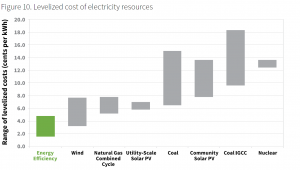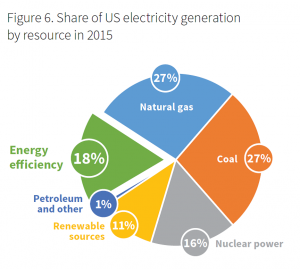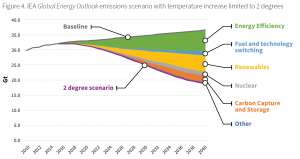How to calculate with energy efficiency as a part of the energy generation portfolio? Does energy efficiency play a significant role in this game?
WHAT is the concept?
It is clear enough that if you have implemented an energy conservation project at your manufacturing plant thus saving 30% of energy (maintaining the same level of output – of course), then this amount of energy can be used for other purposes, by you or by other consumers. What you have not consumed is a resource that stands at everybody’s disposal. If you register all the conserved energy amounts and aggregate them on let’s say a national level you’ll get a huge figure in power or energy. This amount of energy should not be generated in the future in your national energy generation system. In this sense this is a virtual resource.
WHY is it important?
Firstly, this is a very valuable part of the generation resource portfolio from a cost point of you as you can see in the graph below. (All graphs below are from ACEEE, The Greatest Energy Story You Haven’t Heard, authored by Maggie Molina, Patrick Kiker, Seth Nowak, August 2016.)

(Note: these are the costs of utility energy efficiency programs.)
Secondly, this is a very significant part of the resource portfolio. This is clearly reflected in the following graph.

If we take a look at the figures of electricity generation in the U.S. we can see that the energy efficiency as a resource is the third greatest one with its 18% share after natural gas and coal. The significance of energy efficiency shall continue to boost in the near future. By 2030 the energy efficiency as a virtual resource will be the greatest part of the portfolio in the U.S. electricity generation, its share will reach the value of 33%, while the second largest slice of the pie – natural gas – will have only 25%.
Thirdly, don’t forget the effect on global warming.
You may be familiar with the 2°C Scenario (2DS). (http://www.iea.org/publications/
scenariosandprojections/) This scenario depicts an energy system deployment pathway and an emissions trajectory consistent with at least a 50% chance of limiting the average global temperature increase to 2°C. In the 2DS the total CO2 emissions between 2015 and 2100 is limited to 1 000 GtCO2. The 2DS reduces CO2 emissions (including emissions from fuel combustion and process and feedstock emissions in industry) by almost 60% by 2050 (compared with 2013).
According to the International Energy Agency (IEA) energy efficiency accounts for almost half of the GHG reduction in the 2DS.

Now you can see why energy efficiency is a great story. That is why I like it. That is why I want to be a part of it.
For all the details about the ACEEE publication please visit: http://aceee.org/blog/2016/08/our-new-analysis-finds-energy.

Leave a Reply